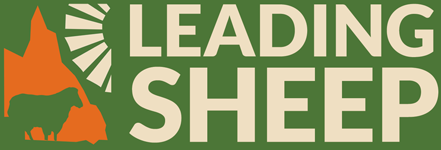Leading Sheep recently canvassed producers who have been using Donkeys as Guardian Animals for different lengths of time and asked them to list the 3 key things that they would tell people going into donkeys for the first time. The responses were:
Producer 1
- We consider bonding the most important aspect of the whole program. Bonding the donkeys to the sheep and vice versa. I bought a mob of heavily pregnant ewes, and let them go in the paddock with donkeys. These ewes tended to graze at the opposite end of the paddock to the donkeys even though the donkeys were bonded to other sheep. When you see the sheep running after donkeys you know they are properly bonded.
- Bonding includes retaining donkeys with approximately 12 to 20 sheep in yards for a week to 10 days, followed by running them in a very small paddock for 2 to 4 weeks, depending on the animals. Those few sheep when rejoined to their mob will be enough to bond the entire mob.
- Treat the donkeys with kindness and they will respond in like manner. The reverse is also true.
- You should never run 2 entire Jack donkeys in the same paddock. Even when these are 6 months or more of age the dominant Jack will attack viciously the lesser animal especially when there is a female in the same paddock.
- Be mindful that donkeys will learn to open gates, whether they are Bogan gates or swing gates with eagle beak catches or wooden slides.
- These animals are very low maintenance and will eat a lot of weeds and rubbish as they are naturally a desert animal.
Producer 2
- Get the donkeys in and bonded before the dogs are in big numbers.
- Allow plenty of time to settle down and bond the donkeys 2 to 3 weeks, time spent with induction is crucial to their effectiveness.
- Castrate the Jacks, that way you can set and forget by not having to muster them up and castrate offspring, and also you can control the population (they are a feral animal).
- Over-riding all of this is that producers must be aware that this is entirely experimental and not necessarily a solution to the dingo problem.
Producer 3
- Bonding the donkeys with the mob is everything, and may require some patience. Small areas at first, yard to holding paddock to larger paddock. Bonding one donkey at a time may be required. No good having a pair of donkeys down one end of the paddock, and the mob at the other end. The donkey/s need to treat the sheep as part of their family.
- Younger donkeys, 12 to 18 months old, bond more readily, so I am told.
- Make sure you geld any Jacks you buy. Geldings have a more consistent temperament than fillies… and they concentrate on guarding and nothing else.
As you have no doubt noticed there are consistent themes running through the key points (the importance of properly bonding including taking your time to get good results and gelding Jacks). I have been reminded of the large number of people killed by Donkeys world-wide emphasising the importance of treating them with kindness. Leading Sheep is keen to ensure that we do not replace one pest with another so castrate.
Contributors were Neil Cameron, a producer member for Leading Sheep South Region Committee, Rod Ross and Diane and Bryant Murray. Thanks to these generous people for sharing their experience and knowledge. These contributions plus others that come in will be put up on the Leading Sheep website.
Thanks to Noel O’ Dempsey (Leading Sheep South Region Coordinator) for getting this information together.
This email was sent by Alex Stirton (Extension Officer, DAFF Charleville) on behalf of the Leading Sheep South Region Coordinating Committee.
Click here to find out more about Leading Sheep and this committee.
